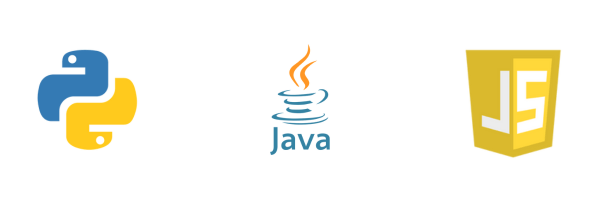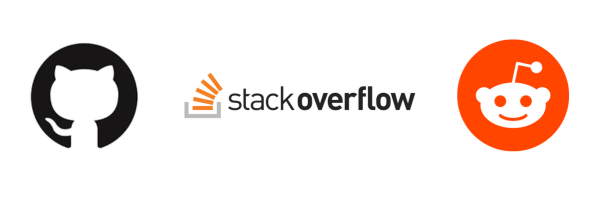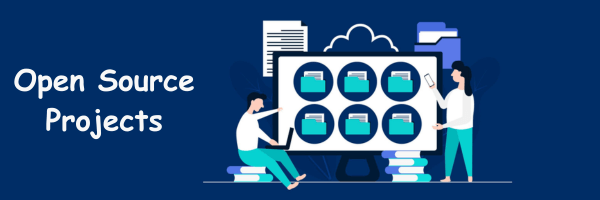Relational operators are a fundamental concept in Java programming that allows you to compare values and determine the relationship between them. They are used to evaluate conditions and make decisions based on the result. Relational operators return a Boolean value (true or false) indicating whether the comparison is true or false.
There must be a good understanding of what are relational operators in Java so that you can understand the harder concepts easily. So we have got you the best guide to understand everything you need to know about relational operators in Java.
Without any delay lets begin to understand what are relational operators in Java:
1. Introduction to Relational Operators
Definition and Purpose
Relational operators are symbols or characters that express the relationship between two values. The common relational operators in Java are:
Equality operator (==):
This operator is used to check if two values are equal.
Inequality operator (!=):
This operator is used to check if two values are not equal.
Greater than operator (>):
The purpose of this operator is to verify whether the value on the left side is greater than the value on the right side.
Less than operator (<):
This operator is used to check if the left operand is less than the right operand.
Greater than or equal to operator (>=):
The purpose of this operator is to assess whether the value on the left side is greater than or equal to the value on the right side.
Less than or equal to operator (<=):
This operator is used to check if the left operand is less than or equal to the right operand.
Importance in Programming
Relational operators play a crucial role in programming as they enable decision-making and control the flow of execution. They are commonly used in conditional statements (if-else, switch), loops, and other control structures to perform comparisons and determine the program’s behavior.
Commonly Used Relational Operators
In addition to the six relational operators mentioned earlier, Java also provides a few other operators for specific purposes:
instanceof operator: Checks if an object is an instance of a particular class or interface.
equals() method: Checks if two objects are equal based on their content rather than reference.
compareTo() method: Compares two objects based on their natural ordering.
2. Working with Relational Operators
Let’s explore each relational operator in detail and understand how they are used in Java.
Equality Operator (==)
The equality operator (==) is used to check if two values are equal. It compares the values on both sides of the operator and returns true if they are equal, and false otherwise.
Example: Comparing Numeric Values

In this example, the equality operator compares the values of num1 and num2. Since num1 is not equal to num2, the result is false.
Example: Comparing String Values

In this example, the equality operator compares the values of text1 and text2. Since both variables hold the same string value, the result is true.
Inequality Operator (!=)
The inequality operator (!=) checks if two values are not equal. It returns true if the values are different, and false if they are equal.
Example: Checking Inequality for Numeric Values

In this example, the inequality operator compares num1 and num2. Since num1 is not equal to num2, the result is true.
Example: Checking Inequality for String Values

Here, the inequality operator compares the values of text1 and text2. As the two strings are not equal, the result is true.
3. Comparison Operators
Comparison operators are used to compare values based on their relationships, such as greater than, less than, greater than or equal to, and less than or equal to.
Greater Than Operator (>)
The greater than operator (>) is employed to evaluate whether the value on the left side exceeds the value on the right side.
Example: Comparing Numeric Values

In this example, the greater than operator compares num1 and num2. Since num1 is greater than num2, the result is true.
Example: Comparing Characters

Here, the greater than operator compares the Unicode values of char1 and char2. Since the Unicode value of ‘a’ is less than ‘b’, the result is false.
Less Than Operator (<)
The less than operator (<) checks if the value on the left side is less than the value on the right side.
Example: Comparing Numeric Values

In this example, the less than operator compares num1 and num2. Since num1 is not less than num2, the result is false.
Example: Comparing Characters

Here, the less than operator compares the Unicode values of char1 and char2. Since the Unicode value of ‘a’ is less than ‘b’, the result is true.
Greater Than or Equal To Operator (>=)
The greater than or equal to operator (>=) checks if the value on the left side is greater than or equal to the value on the right side.
Example: Comparing Numeric Values

In this example, the greater than or equal to operator compares num1 and num2. Since num1 is greater than num2, the result is true.
Example: Comparing Characters

Here, the greater than or equal to operator compares the Unicode values of char1 and char2. Since the Unicode value of ‘a’ is less than ‘b’, the result is false.
Less Than or Equal To Operator (<=)
The less than or equal to operator (<=) checks if the value on the left side is less than or equal to the value on the right side.
Example: Comparing Numeric Values

In this example, the less than or equal to operator compares num1 and num2. Since num1 is not less than or equal to num2, the result is false.
Example: Comparing Characters

Here, the less than or equal to operator compares the Unicode values of char1 and char2. Since the Unicode value of ‘a’ is less than ‘b’, the result is true.
4. Logical Operators with Relational Operators
Logical operators are used to combine and manipulate relational expressions. The three logical operators in Java are: logical AND (&&), logical OR (||), and logical NOT (!).
Logical AND Operator (&&)
The logical AND operator (&&) returns true if both the left and right operands are true, and false otherwise.
Example: Combining Relational Expressions

In this example, the logical AND operator combines the expressions (num > 5) and (num < 20). Since both expressions evaluate to true, the result is true.
Logical OR Operator (||)
The logical OR operator (||) returns true if either the left or right operand is true, and false if both operands are false.
Example: Combining Relational Expressions

In this example, the logical OR operator combines the expressions (num < 5) and (num > 20). Since both expressions evaluate to `false, the result is false`.
Logical NOT Operator (!)
The logical NOT operator (!) negates the result of a relational expression. When the expression is false, it will yield true; conversely, when the expression is true, it will yield false.
Example: Negating Relational Expressions

In this example, the logical NOT operator negates the value of the flag. Since flag is true, the result is false.
5. Best Practices for Using Relational Operators
When working with relational operators, it’s important to follow some best practices to ensure proper usage and avoid common mistakes.
Proper Operand Selection
Choose the appropriate operands for comparison based on their data types. For example, you cannot compare a String with an int using the equality operator. Make sure the operands are compatible and meaningful in the context of the comparison.
Avoiding Common Mistakes
Remember to use double equals (==) for equality comparisons and not single equals (=) which is used for assignment.
Be cautious when comparing floating-point numbers due to the potential for rounding errors. Consider using comparison methods provided by the BigDecimal class for precise comparisons.
Be mindful of comparing object references using the equality operator (==). It compares the references, not the content of the objects. For object equality comparisons, use the equals() method.
Handling Edge Cases
Consider special cases and edge cases in your comparisons. For example, when comparing strings, be aware of case sensitivity. In numeric comparisons, consider zero, negative, and positive values as well as maximum and minimum values.
6. Real-World Examples of Relational Operators in Java
Relational operators are extensively used in various real-world scenarios in Java programming. Here are a few examples:
Sorting Algorithms
Relational operators play a crucial role in sorting algorithms such as bubble sort, insertion sort, and selection sort. These algorithms rely on comparisons between elements to rearrange them in a specific order.
User Input Validation
When developing applications that require user input, relational operators are commonly used for input validation. For example, you can compare the entered value with predefined limits or check if the input meets certain criteria before processing it.
Conditional Statements
Relational operators are integral to conditional statements like if-else and switch statements. They help determine the execution path based on the conditions evaluated by the relational expressions.
Relational operators are fundamental tools in Java programming for comparing values and making decisions based on the results. Understanding how to use relational operators correctly enables you to control the flow of your programs, validate input, and perform various comparisons. By applying best practices and considering real-world use cases, you can leverage the power of relational operators to write efficient and effective Java code.
You must now have a good understanding of what “Relational Operators in Java” are, but you might still have a few questions. Check out our blog post on “Top 10 Frequently Asked Questions on Relational Operators in Java” to gain a more comprehensive understanding of the concept.
About the Author
Luqmaan Shaik serves as the Blog Specialist at Unikaksha, where he leads a team of technical writers dedicated to researching and providing valuable content for blog readers. With a wealth of experience in SEO tools and technologies, his writing interests encompass a wide range of subjects, reflecting the diverse nature of the articles. During his leisure time, he indulges in an equal balance of web content and book consumption.























